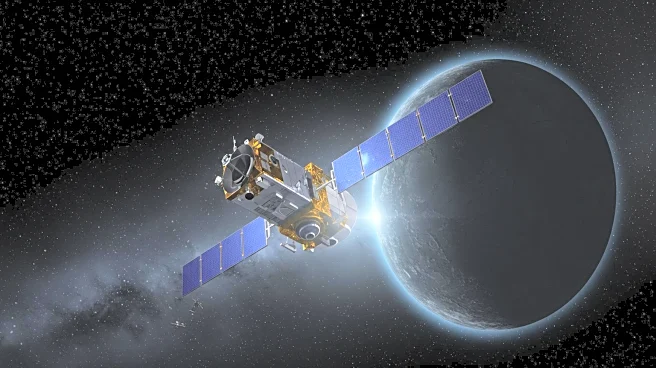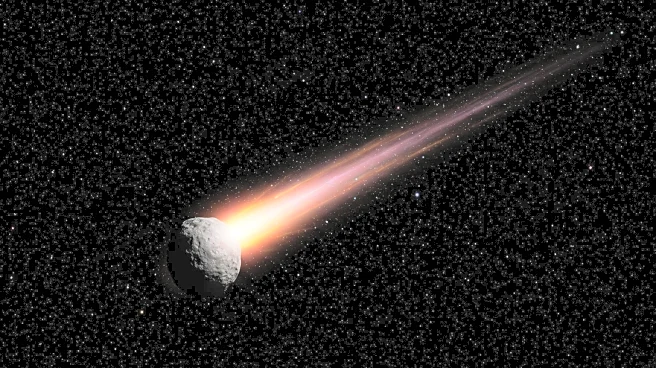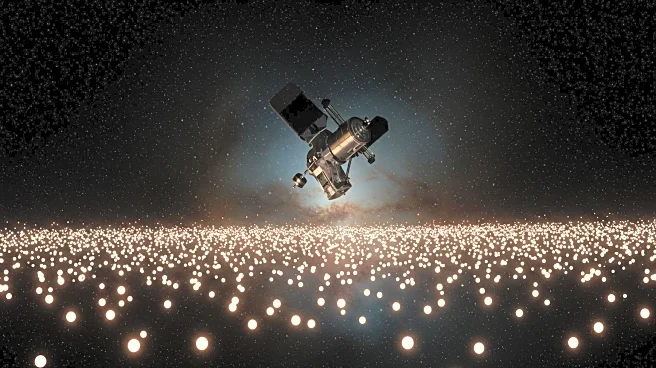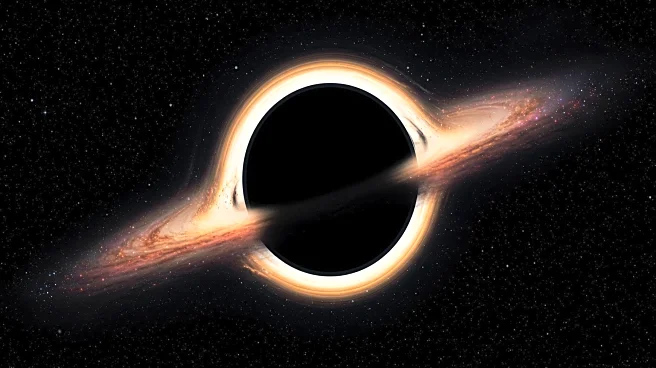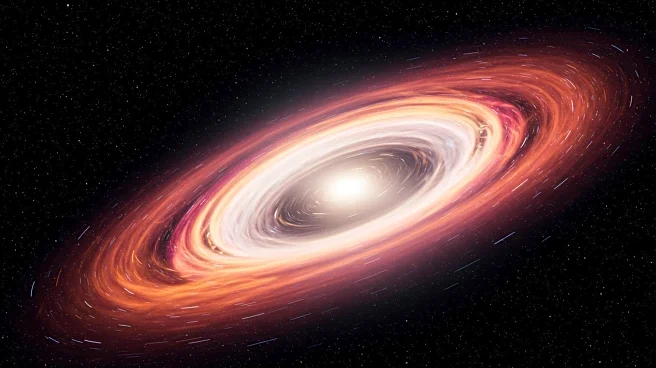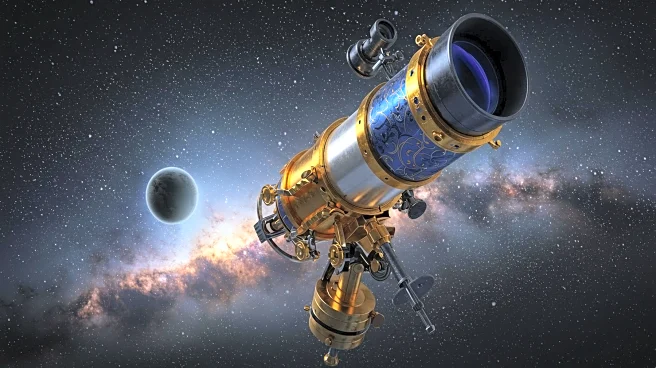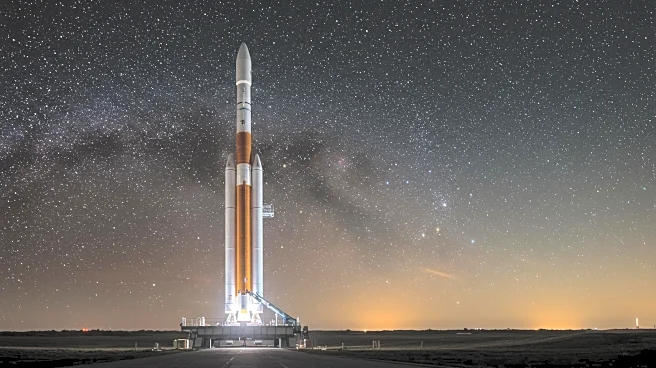What's Happening?
NASA's Imaging X-ray Polarimetry Explorer (IXPE) has revealed new insights into black hole coronae, particularly highlighting a 9.1% polarization degree. This discovery challenges existing models of black holes, suggesting dynamic complexities such as strong winds from accretion disks or moving coronae. The findings have generated significant interest and discussion within the scientific community and among the public, especially on social media platforms like Twitter and Reddit. The term 'heartbeat' black hole has been used to describe the dynamic nature of these cosmic bodies, which contrasts with their traditional perception as celestial vacuum cleaners.
Why It's Important?
The IXPE's findings are crucial as they prompt a reevaluation of current black hole models, potentially leading to new theoretical frameworks in astrophysics. This discovery not only impacts the scientific understanding of individual black holes but also has broader implications for other astronomical phenomena. The renewed interest in the physics governing black hole environments could lead to advancements in space exploration and technology, influencing future research and missions. Stakeholders in the scientific community stand to gain from these insights, as they may pave the way for innovative approaches to studying cosmic phenomena.
What's Next?
The scientific community is eagerly anticipating further data from IXPE to explore these new possibilities. Continued research and analysis are expected to refine the understanding of black hole dynamics and their environments. Future updates from NASA and other scientific outlets will likely provide more detailed insights, potentially leading to breakthroughs in astrophysical theories and models. The ongoing discussions and debates within the scientific community will shape the direction of future research in this field.
Beyond the Headlines
The discovery raises ethical and philosophical questions about the nature of the universe and our understanding of cosmic phenomena. It challenges long-held perceptions and encourages a deeper exploration of the unknown aspects of space. The implications of these findings may extend beyond scientific circles, influencing cultural and educational narratives about the universe and our place within it.


